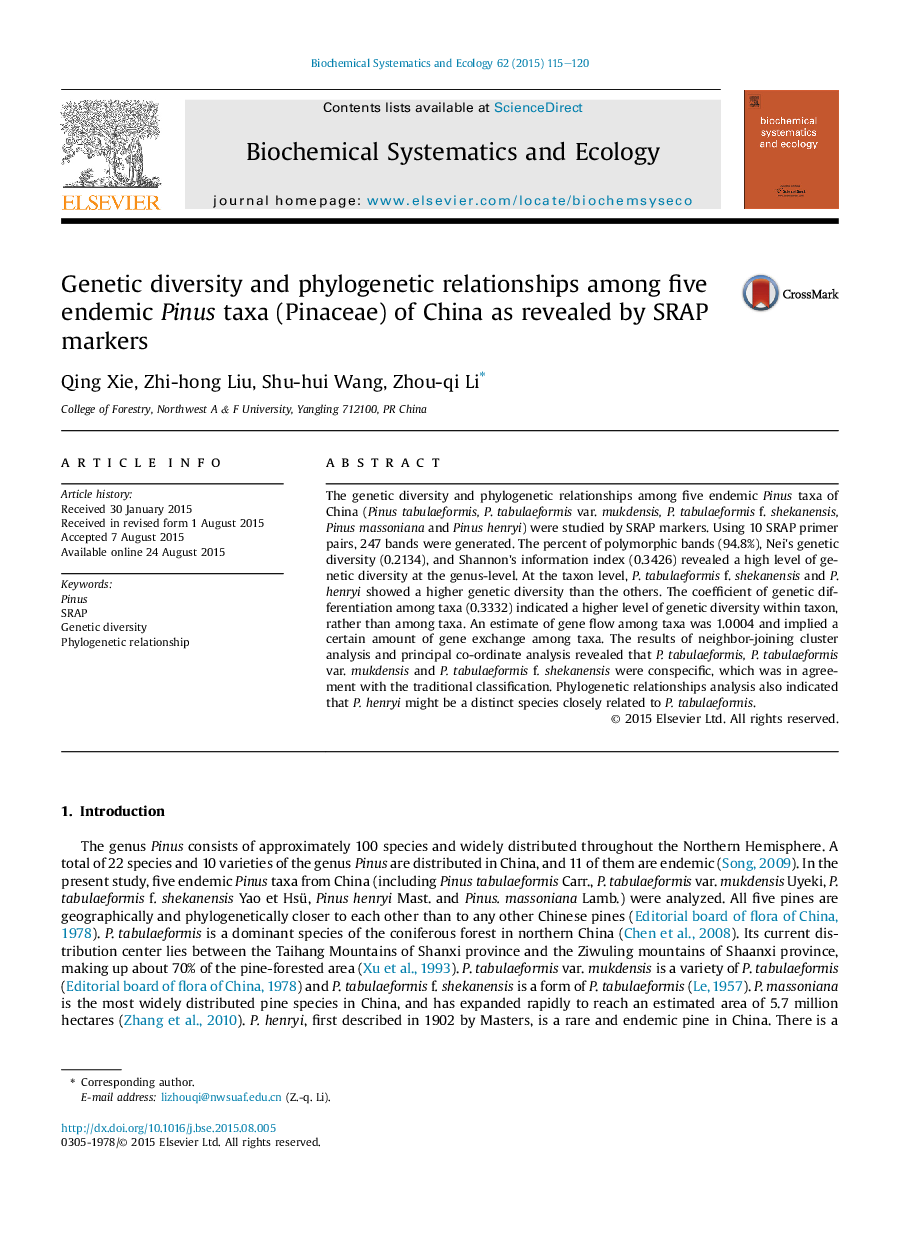| Article ID | Journal | Published Year | Pages | File Type |
|---|---|---|---|---|
| 1351277 | Biochemical Systematics and Ecology | 2015 | 6 Pages |
•SRAP was used to analyze genetic diversity and phylogenetic relationship among five endemic Pinus taxa of China.•Higher genetic diversity was observed in Pinus tabulaeformis f. shekanensis and Pinus henryi than the others.•The cluster analysis showed species-based grouping.•We deduced that P. henryi might be a distinct species closely related to P. tabulaeformis.
The genetic diversity and phylogenetic relationships among five endemic Pinus taxa of China (Pinus tabulaeformis, P. tabulaeformis var. mukdensis, P. tabulaeformis f. shekanensis, Pinus massoniana and Pinus henryi) were studied by SRAP markers. Using 10 SRAP primer pairs, 247 bands were generated. The percent of polymorphic bands (94.8%), Nei's genetic diversity (0.2134), and Shannon's information index (0.3426) revealed a high level of genetic diversity at the genus-level. At the taxon level, P. tabulaeformis f. shekanensis and P. henryi showed a higher genetic diversity than the others. The coefficient of genetic differentiation among taxa (0.3332) indicated a higher level of genetic diversity within taxon, rather than among taxa. An estimate of gene flow among taxa was 1.0004 and implied a certain amount of gene exchange among taxa. The results of neighbor-joining cluster analysis and principal co-ordinate analysis revealed that P. tabulaeformis, P. tabulaeformis var. mukdensis and P. tabulaeformis f. shekanensis were conspecific, which was in agreement with the traditional classification. Phylogenetic relationships analysis also indicated that P. henryi might be a distinct species closely related to P. tabulaeformis.
